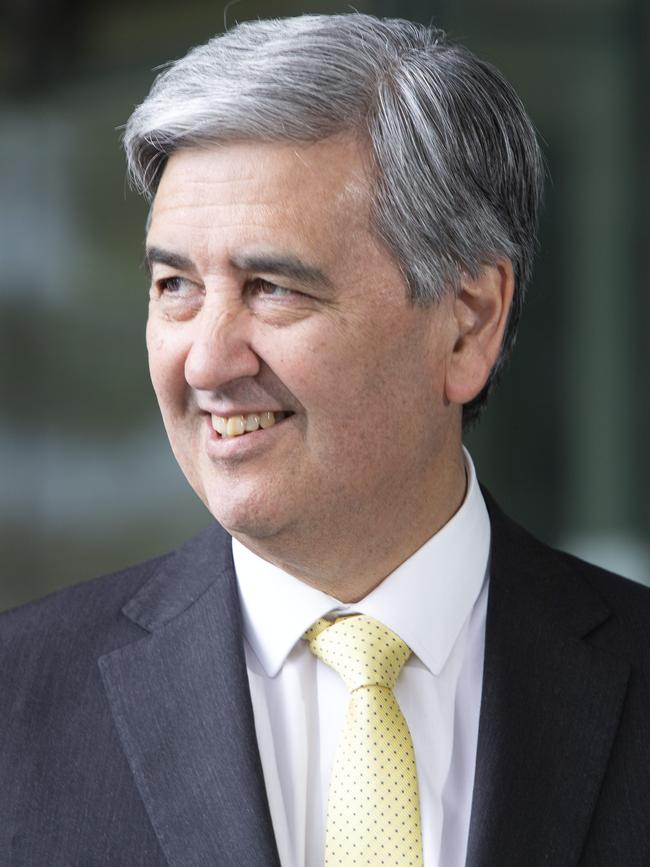Paul Starick: Governments piling on debt in election budgets
Debt was once a dirty word but federal and state governments are mortgaging the future ahead of elections, Paul Starick writes.
Opinion
Don't miss out on the headlines from Opinion. Followed categories will be added to My News.
Debt was a dirty word a generation ago, back in the late 1980s and early ’90s. Households across Australia suffered as they struggled with double-digit interest on mortgage repayments.
South Australia’s economy teetered after $3.15bn in government-guaranteed funds evaporated in the 1991 State Bank financial disaster. This shattered and angered the state, which arguably remains saddled with the impact of a decade trying to restore its finances.
Today, though, interest rates are at historic lows, fuelling a house-price boom and surging consumer confidence as Australia stampedes out of its first recession since the early 1990s – the time of the State Bank collapse.
Federal Treasurer Josh Frydenberg, unveiling his budget on Tuesday night, revealed net debt would peak at $980.6bn, or 40.9 per cent of GDP, in June 2025.
Once upon a time, voters would have been apoplectic at this staggering sum. Yet, as Mr Frydenberg argues, it is low by international standards. “As a share of the economy, net debt is around half of that in the UK and US and less than a third of that in Japan,” he said
Advertiser columnist David Koch rightly argued the debt figures were higher than normal but very manageable. But, as he acknowledged, people stress about leaving a huge credit card bill for their children to repay.
Asked by FIVEaa’s David Penberthy how today’s children would establish themselves in the jobs market and buy houses, Finance Minister Simon Birmingham cited the important measure of debt relative to the economy’s size.
“We are able to contain that over a period of time and the faster our economy grows, the less that (debt) becomes an issue,” Senator Birmingham said.
“That’s why so much of the plan in this budget is built around how we grow the economy to recover from the shock that COVID (delivered), to deal with the immediate consequences, but also the long-term ones.”
The argument is that kickstarting the economy now, through measures such as a further $1.7bn skills package to train more than 170,000 apprentices and trainees, will boost jobs for the future and erase debt as an issue.
State Treasurer Rob Lucas, who delivers his budget on June 22, entered politics in 1982 and, in his first stint steering the state’s books, was charged with hauling SA back from the State Bank’s debt abyss.

But in 2019, he became a convert to capitalising on low interest rates to drive infrastructure investment.
“Many business people, and to a lesser extent households, were saying ‘Hey, we’ve got mortgages of three, four, five or $600,000. It’s a fact of life in terms of running our household budget, that we’re running debt in addition to trying to balance our yearly budget’,” Mr Lucas said at the time.
S & P Global Ratings Australia, in its federal budget assessment, said government debt “would remain elevated for years” but predicted borrowing costs would “remain manageable because of historically low interest rates”.
But it sounded a significant note of caution, saying it had a negative outlook on Australia and “risks remain tilted toward the downside”. It gave the example that balancing budgets, including at state level, “could take longer than we currently expect”.
Mr Lucas has signalled his budget will forecast a surplus by 2024-25, at the end of the four-year forward estimates. His November 2020 budget forecast a $406m surplus by 2023-24. The budget deficit is expected to be less than last year’s $2.59bn, helped by a near-$1bn GST windfall.
Net debt last year was forecast to reach $33.2bn by mid-2024. The Liberals are likely to continue a comparatively cautious approach to debt but this is an election budget.
As Mr Frydenberg has discovered, though, even a huge-spending budget will not silence critics, particularly on the important health issue.
State Labor treasury spokesman Stephen Mullighan swiftly capitalised on the GST windfall by arguing Mr Lucas now had the cash to “get on with the job of fixing the ramping crisis in our public hospitals”. Labor is reaping political dividends from this issue, which is producing horror stories across the country.
Queensland Health data revealed last month showed more than half of patients brought to three of that state’s largest hospitals by ambulance were forced to ramp in February.
Figures compiled by the State Government show WA patients spending more hours waiting in ambulance for hospital admission than those in SA.
Labor is presenting as the alternative government but has yet to produce a detailed policy about how it might tackle ramping.
State and federal governments are plunging further into debt to fund election budgets as they face voters within months. Hopefully, future generations can afford the bill.



